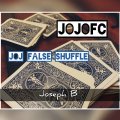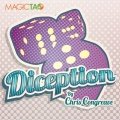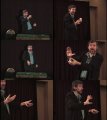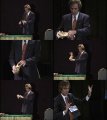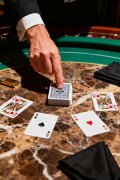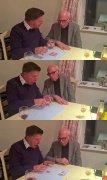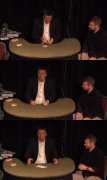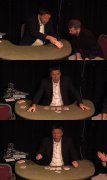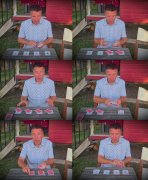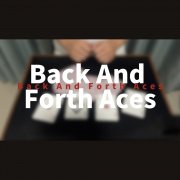Video clips (download) in Magic & Mentalism
For DVDs and video files on disc please check our DVD & Video (disc) category. For DVDs that you can download instantly see DVD (download+streamed) category.
Video instructions are great particularly when it comes to timing, pacing or when the moves become difficult. However, video is lacking in many ways. If you do not get a healthy does of reading your development as magician will suffer. Our suggestion is to at least spend as much time reading as watching videos. You should have no problem finding enough reading in the form of great ebooks here at the Lybrary.
Authors
Products
Minimal Colossal
Pablo Amirá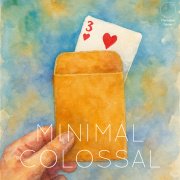
Minimal Colossal is one of my favorite approaches from the neoclassic Kolossal Killer from Kenton Knepper.
- One envelope in full view
- Any playing card is named through a simple and flowing procedure
- One card, completely correct
In this video you will learn the basic secrets, a simple and effective use of the classic OBO principle (thanks Kenton for your permission and blessing), the construction of the special envelope (DIY, very simple to make) and much more. You will learn variations and extra uses and ideas using the methods at play.
- 100% practical for all situations ...
Quadruple Elevator
Miku W.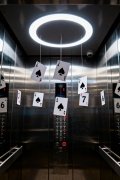
An adaptation of a classic card routine - the Spades 1, 2, 3, and 4 travel between the top and bottom of the deck, finally gathering together on top. Just when you think it's over - no, the magic has only begun. The Spades 5, 6, 7, and 8 appear on top of the deck, the Spades 9, 10, J, and Q appear on the bottom, and the final Spade King rises to the very top of the deck. For full details, see the performance video.
1st edition 2025, video 8:00.
Autumn Leaves
Pablo Amirá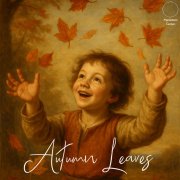
Imagine a meaningful and memorable piece of mentalism using just a deck of cards.
- 100% impromptu
- No boring storytelling
- No gimmicks
- Simple sleights
- Useful for all situations
Welcome to Autumn Leaves, a piece that I originally released at the Emergency Act, part of my professional repertoire that can serve you well as a fascinating card prediction and a reminder of the power of child-like awe.
Every magician and mentalist can predict a card, but be the one who creates a beautiful precognition.
1st edition 2025, video 15:15.
Sandwiches and Collectors
Miku W.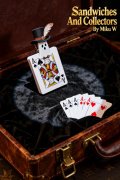
Sandwich and Collectors are two of my favorite card effects and the ones I've studied the most. This is my original routine combining both effects.
The spectator selects a card, returns it to the deck, and the deck is shuffled. The magician cuts the two Jokers and four Aces into the center. When the deck is spread again, the two Jokers are found sandwiching the spectator's selection, while the four Aces have collected the other three cards of the same value. A pure sleight-of-hand routine with no difficult moves.
1st edition 2025, video 6:59.
Friction Control System
Miku W.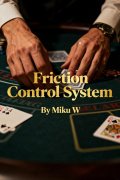
This is my control system, which allows you to cleanly push the card into the deck with no visible break, and still maintain control.
The system can control the card to four common positions: the top, the bottom, the second from the top, and the second from the bottom. It can be applied flexibly in many card routines, taking your sleight of hand to the next level. For the detailed controls, please watch the performance video.
1st edition 2025, video 4:11
Tracking Four Cards
Miku W.This is a trick for quickly locating four selections.
During an overhand shuffle, four cards are freely chosen, with no control involved. The spectators clearly see the cards lost in four different positions. Yet in the end, the magician can still locate all four selections with precision. For the full routine and effect, see the video demonstration.
- No force
- No gimmick
- No memory work
- No peeking
1st edition 2025, video 6:42.
Double Sandwich
Stoyan D.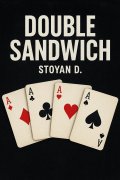
This double sandwich is based on Dragnet by Jack Birnman. I added two moves that replace ATFUS with a better move. I would even say that it only works on this sandwich. It's just my imagination. I've never seen anyone do what I do. The last move is even better, and so I distribute the aces with the spectator's cards to be in certain places, so that they are different places not next to each other. And at the beginning, if you notice, I don't arrange the cards red-black-black-red, like in every version.
Inspired from Dragnet by Jack Birnman, Tengard by Paul Gordon, New jack...
Slydini Psychology
D. Angelo Ferri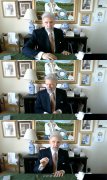
Dennis Barlotta, aka D. Angelo Ferri, studied with Slydini for 8 years. In this video, he is not teaching any tricks but explains the psychology and thinking behind Slydini's method of deception. How did Sldyini use his eyes? How did he involve spectators in a non-threatening way? Why did Slydini do the things he did? This video is intended to give magicians who are curious about Slydini a closer look at how he thought. Dennis will break it down and explain the thinking behind Slydini's system of misdirection and deception.
This video is a good introduction to the other instructional...
Double Serch
Miku W.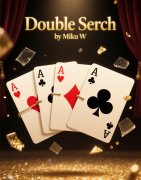
The magician begins by taking out four Aces. The spectator selects one red card and one black card, which are then returned to the deck and shuffled. The spectator is asked to cut the deck randomly into four packets. The four Aces are placed on top of each packet. The packets are reassembled. When the deck is spread, the four Aces not only gather together, but the red Aces sandwich the spectator’s red selection, and the black Aces sandwich the spectator’s black selection.
- No force
- No gimmick
- Impromptu performance
1st edition 2025, video 5:08
LWP Count
Peter Pellikaan
This count has one of the highest hide-to-show ratios of any false count. You are using four different cards, yet you can show each one three times in a row to credibly demonstrate you have a packet of three identical cards. Doing this four times with four different cards looks incredible on its own. Nevertheless, you would use this as part of a larger routine.
1st edition 2025, video 1:43.
Bandiquid
Doan
A rubber band is stretched across your open palm. You insert a pen under the rubber band and slowly start to stretch the rubber band further away from the palm. Everything looks fair and as it should be. Suddenly, the rubber band has melted through the pen without any apparent motion.
The rubber band and pen can be handed out for inspection. They are completely ungimmicked.
1st edition 2025, video 4 min.
Mona Lisa
Brick Tilley
In the early '70's Jon Racherbaumer received 8 mm color footage of Chuck Smith executing a five-card poker hand switch. This was featured in the short film Lookout, Cleveland, now on YouTube. An excerpt is shown below. A letter from Smith is included here describing how he used it during WWII while in the military. This unique technique has been kept hidden until now. It is not easy, as many things are happening at once. This takes skill and nerve. The price is designed to keep it out of the hands of the curious. While we don't condone cheating, it is time this was recorded for posterity. ...
Turnover and Jiggle Pass
Brick Tilley
Early books on magic, such as Modern Magic and Illustrated Magic (1931) stressed mastering the pass as fundamentally necessary to every card handler. As time went on, easier sleights such as the double cut to the break replaced it, rendering it anachronistic. Times change. Recently, a friend was asked to comment on one of today's card experts. Her reply, "Too much shuffling." Modern audiences often don't know what happened, but they sense when it happened (He did something tricky) because of excessive cutting and shuffling. Attention spans are shorter now so effects must...
Scintilla
Pablo Amirá
"The new peek you put out is wonderful! Isn't it amazing when choreography and context allow us to simplify the manner in which we can peek and reveal information! I'm excited to practice this and use it, soon!" - Christopher Parrish
Scintilla is a new idea that you will add to your toolkit of ungimmicked telepathic possibilities. An impromptu system that allows you to have a full peek without any strange or obvious moves.
- Only two pieces of paper are needed
- No preparation
- Direct and simple handling
- No tears, no folds
You can use Scintilla for drawing duplications, words, questions,...
No Way Count
Peter Pellikaan
You start with two packets of four identical cards each, for example, four 10s of hearts, and four aces of spades. You interleave them, show them again singly to confirm that they have been interleaved, but then magically they have separated. You do this twice, once face-down, and the second time face-up.
1st edition 2025, video 2:04.
Open Prediction 2025
Pablo Amirá
"I checked out the Open Prediction 2025 and just wanted to say that's really cool. It's the exact type of card effects I like. It's just a genius method, so strong and direct, I love it. The fact it's so approachable for any skill level is great too." - Matt Overd
One of my favorite plots in card mentalism is the "Open Prediction". Many different scripts and presentations are possible with this classic from Paul Curry.
In this new method, we follow these practical conditions:
- Shuffled deck (even an incomplete one)
- A card is named as the "Open Prediction"
- Cards are dealt face down in your open hand...








